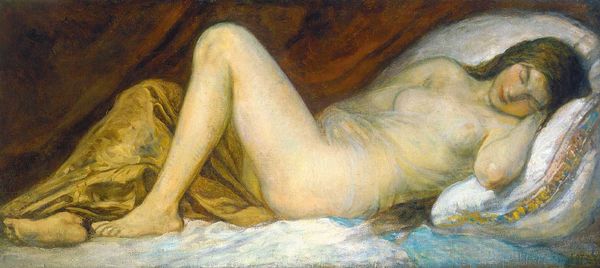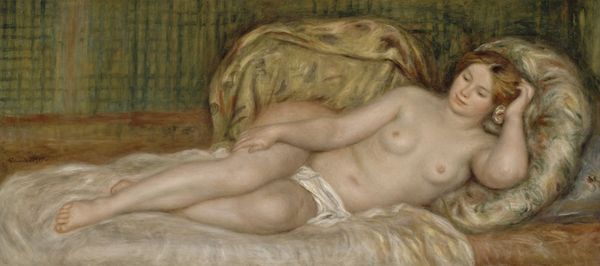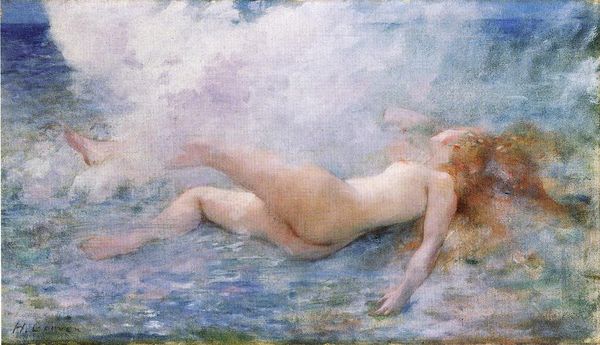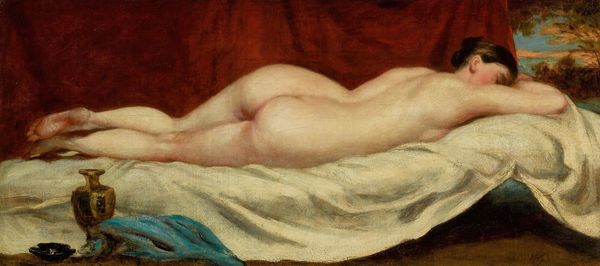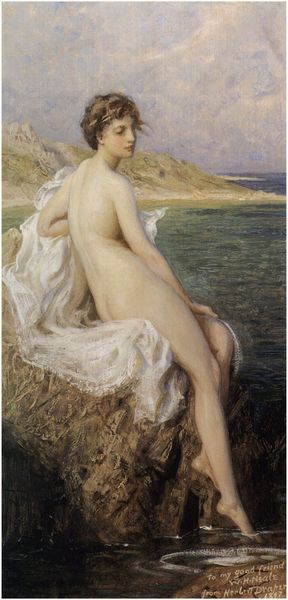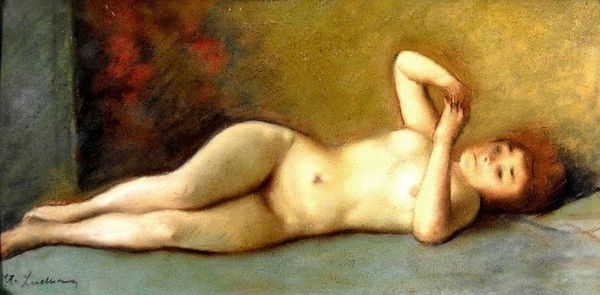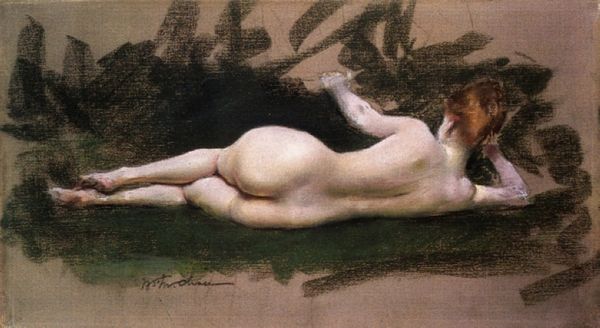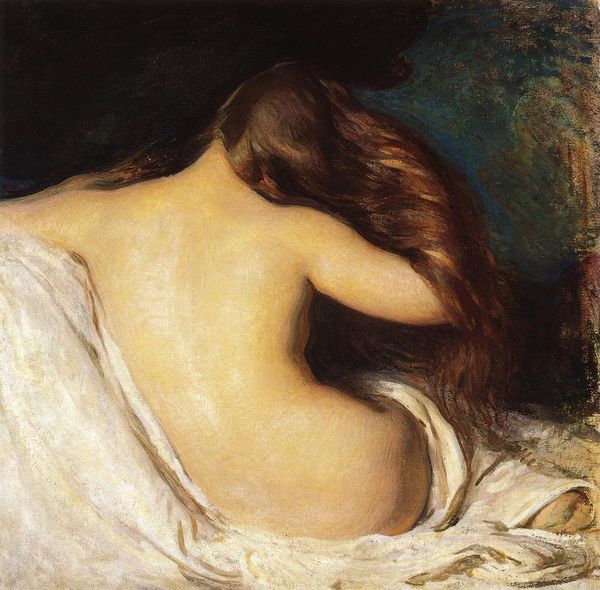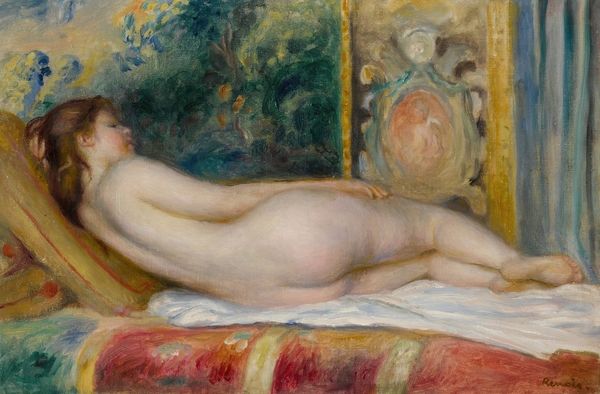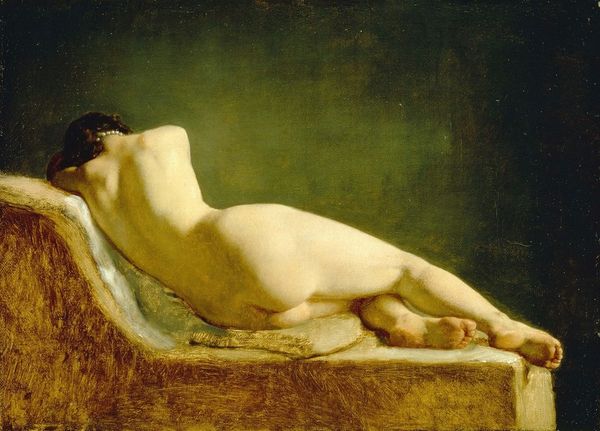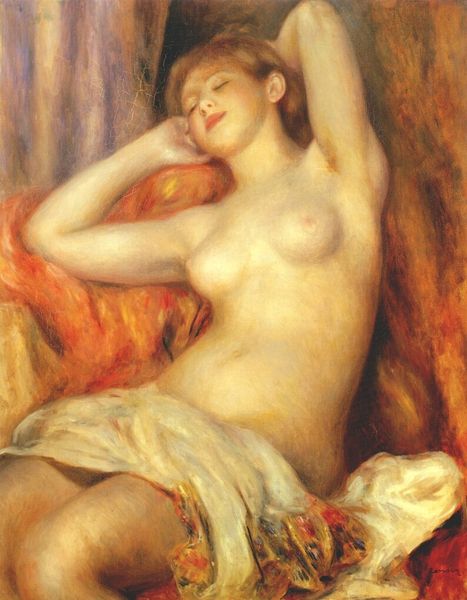
Copyright: Public domain
Editor: We're looking at "Venus" by Károly Lotz, created around 1900 using oil paints. It's breathtaking – Venus lounging serenely on a shell. The softness and light are incredibly captivating, yet it feels quite idealized. What do you see in this piece? Curator: Intriguing! I’m particularly drawn to the composition and handling of light. Notice how Lotz employs a delicate sfumato technique. There’s a conscious blurring of lines and softening of forms that emphasizes an idealized, almost ethereal, quality. Editor: Yes, I noticed that too. How the soft transitions sort of eliminate sharper edges, and the color palette definitely adds to this effect, right? It creates an immersive sense of beauty. Curator: Precisely. Consider also the deliberate contrapposto of the figure. The subtle twist of her body introduces movement and dynamism within an otherwise static composition. Lotz uses this to further highlight the beauty of form, its curvatures, and proportions. Observe the intricate interplay between the figure and its support – the pearlescent shell, draped fabrics, and the subtle rendering of the sea beyond. Do these not contribute to a harmonious, self-contained aesthetic experience? Editor: It's so considered, so deliberately arranged. And yet the way he’s captured light is superb! It’s clearly meant to showcase form. Curator: It seems, then, that this image transcends any narrative function, choosing, instead, to simply celebrate form and light in a detached and unemotional register. Editor: Thank you; I am really starting to see a shift from considering just its allegorical aspects to noticing and acknowledging all the formal qualities and careful decisions. Curator: I think that with continued close study, you'll appreciate just how much the formal elements contribute to its aesthetic impact.
Comments
No comments
Be the first to comment and join the conversation on the ultimate creative platform.
